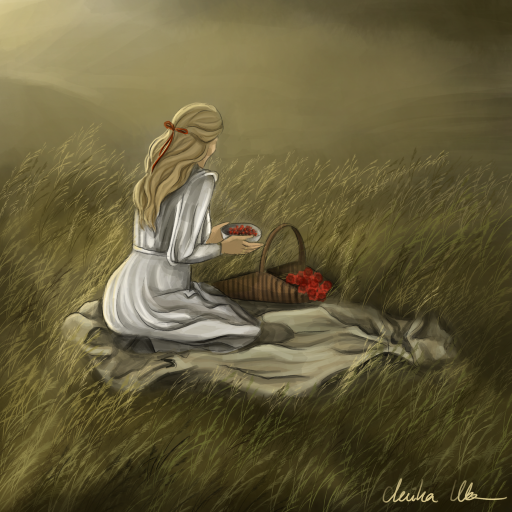Illuminae is an Australian science fiction novel by Amie Kaufman and Jay Kristoff, published in 2015. The first novel of the Illuminae Files trilogy focuses on Ezra and Kady, who try to survive the ongoing war over a planet as well as a deadly plague. The story is told in the unconventional form of a dossier of several types of documents and media.
His Dark Materials is a fantasy trilogy by British author Philip Pullman, first published in 1997. As a retelling and inversion of Milton’s Paradise Lost, the novels tell the story of the child Lyra, in who’s world human souls exist outside of the body in animal form as the so-called dæmons. She later travels between the worlds and reimagines humanity’s fall from paradise. Thereby the trilogy mediates themes like the difference between children and adults, innocence and experience, but also deals with the concept of sin and what makes us human.
The zombie is a well-known and popular element of our culture, especially in the Sci-Fi genre. Nowadays, zombie narratives are almost impossible to avoid – examples include The Walking Dead, iZombie, or Dawn of the Dead.
However, I would like to take a look at unconventional representations of the zombie, which is why I chose His Dark Materials and Illuminae. What is so different about Illuminae’s zombies? And what does this Sci-Fi novel even have to do with His Dark Materials? Well, please do keep on reading.
“So little between it and us and us and it.” (Kaufman and Kristoff 157)
To start off, I would like to bring your attention to the novel that could not be more relevant to us right now. Illuminae’s zombies draw from the famous plague narrative, leading to an increasing contagion paranoia – sounds awfully familiar, does it not?
The transformation to zombies happens through the mutagenic Phobos Virus, which was designed as a bioweapon by BeiTech Industries to attack the ice planet Kerenza IV. Later, the virus spread on the spaceship Copernicus, where refugees were stationed.
There are three possible versions of the virus: Alpha, Beta, and the final form (Kaufman and Kristoff 155). All of them attack victims’ bodies in rather nasty ways: Patients spread the airborne virus by seeking physical contact and comfort from the people around them and actively try to avoid treatment (ibid.). In the worst cases, victims will start becoming increasingly paranoid, repeat “Stop looking at me” (158) all the time and develop ill thoughts towards others. Consequently, the patients start to murder people by cutting off their heads and removing their eyes – yum!
As typical as this might seem for a zombie narrative, it is not. Kristoff and Kaufman rationalise the zombies by assigning them a pathology (cf. Mattila). Their depictions are not mindlessly after brains, but their death drive in the final stage is caused by on-growing madness. In contrast to that, Illuminae’s zombies embody the fear of the uncontrollable consequences of a plague. In addition to that, the mutating virus ties into the zombie characteristic of being capable of mutation and quick adaptation, which underlines the danger associated with them.
Most importantly however, the zombies are not reanimated corpses, but they are living, sentient beings. This is why the mindless consumption of human flesh is very much de-emphasised (cf. Mattila). Furthermore, Illuminae makes use of children as zombies (Kaufman and Kristoff 153), which is also rather uncommon, as the depiction takes away some of the hope a reader might have for the future generations (cf. Mattila). By using these apocalyptic and science fiction narratives and turning them around completely, it definitely defies conventions.
“Africans have a way of making a slave called a zombi. It has no will of its own; it will work day and night without ever running away or complaining. It looks like a corpse.” (Pullman 317f.)
Now onto His Dark Materials: While this choice might be a little confusing at first, the novels actually share many unexpected parallels to Illuminae. The zombie in fantasy literature is certainly not as established as it is in Sci-Fi, although Game of Thrones expanded the rule book quite drastically. When I first read His Dark Materials, the zombies did not even strike me as such until the word was clearly written on the page. Reason for that is, amongst other things, the use of two types of zombies.
At first Pullman introduces the zombies I will call intercision zombies. They include all people who have undergone intercision, a process which severs the link of a human and their dæmon. If the operation succeeds, humans and and their souls do not die, but live on separately. Victims are described as not-humans, ghosts, or something uncanny which does not belong to the world of sense (Pullman 184), while their surviving dæmons are equally ghost-like, “bewildered and frightened and pale as smoke” (222).
The second version is the one I will call Spectre zombies: Their state is caused by Spectres, translucent parasitic entities who consume the dæmons of adults. As their effect is stronger than intercision, as their soul is consumed entirely. Victims of the Spectres are described as “dead in life” (618).
The great difference between these two types of zombies is that the ones after the intercision process are clearly sentient. Reason for that lies in the survival of the dæmons, because they grant humans their consciousness. While they still have no fear, free will, and fight till they are torn apart (522), part of their soul remains. Still, they are weaponised by humans to serve their need for power and acts of war.
This is why these zombies loosely remind us of the Haitian voodoo zombie generation, which finds its origin in slavery and colonialism (Boluk and Lenz 3f.). The reanimated corpses are controlled by a witch doctor, who stood in for a colonial master (ibid.). A great comparison can be made to the character of Mrs Coulter, who gets attributed quite a lot of witch-like characteristics. She uses the zombies she created as bodyguards and her own personal army (Pullman 522).
Just as the intercision zombie is directly created by humans, the Spectre zombie is created as a consequence of reckless human behaviour. As the window to another world at the end of the first book is created through the energy release of intercision, Spectres begin to flood the world and consume their victims’ consciousness.
What is so unconventional about this depiction is not only the use of children as zombies, but also the fact that zombies can neither spread their affliction, nor are they actually aggressive. Their state very reminiscent of hypnosis, as the zombies only evoke ill intent when they are told to do so – they are literal slaves. In contrast to Illuminae, the zombies are not associated with madness, but with a general state of mindlessness: “The zombie looks and acts just like a human, but lacks conscious experience, thus demonstrating that human subjectivity consists of more than the physical” (Boluk and Lenz 9).
The point of this comparison? All authors de-familiarise the zombie to such an extent, that one first questions whether they are actual zombies at all. Their representations are taken from the conventions and their characteristics are stretched out, leading to a re-familiarisation, which is so common for Australian Sci-Fi texts (cf. Mattila).
Even though certain aspects of the two zombie narratives differ, they come together in one important point: Both works reflect on humanity’s interference with either technology or biology in order to weaponise members of society. As Boluk and Lenz put it, the zombies reveal “terrible truths about human nature, existence and sin.“ (7). The human body becomes a machine; a means to an end; the themes of power and control are clearly underlined. Furthermore, we find the plague narratives in both series, as the zombie virus is presented as a secular or spiritual force.
In accordance to the domestication of the zombie in American culture (Edwards 70), the two narratives focus on the transformation of a dehumanised zombie to a sentient being, which can be read as a “metaphor for alienated otherness“ (Spooner 183). In the end, Illuminae and His Dark Materials both shine a light on the monstrousness of humans and, to an extent, defend marginalised outcasts.
Works Cited
Boluk, Stephanie and Wylie Lenz. “Introduction: Generation Z, the Age of Apocalypse.” Generation Zombie: Essays on the Living Dead in Modern Culture, edited by Stephanie Boluk and Wylie Lenz. McFarland & Company, 2011, pp. 1-17.
Edwards, Justin D. “Contemporary American Gothic.” The Cambridge Companion to American Gothic, edited by Jeffrey Andrew Weinstock. Cambridge University Press, 2017, pp. 71-82.
Kaufman, Amie and Jay Kristoff. Illuminae. Rock the Boat, 2015.
Mattila, Lucas. “Impossible to Ignore. Australian Science Fiction.” YouTube, uploaded by Lucas Mattila, 1 July 2020, https://www.youtube.com/watch?v=dmhazzLHQGY.
Pullman, Philip. His Dark Materials. Northern Lights. The Sublte Knife. The Amber Spyglass, 1995. 1997. 2000. Everyman’s Library, 2011.
Spooner, Catherine. “Twenty-First-Century Gothic.” Terror and Wonder: The Gothic Imagination. Ed. Dale Townshend. London: British Library, 2014, pp.180–207.




